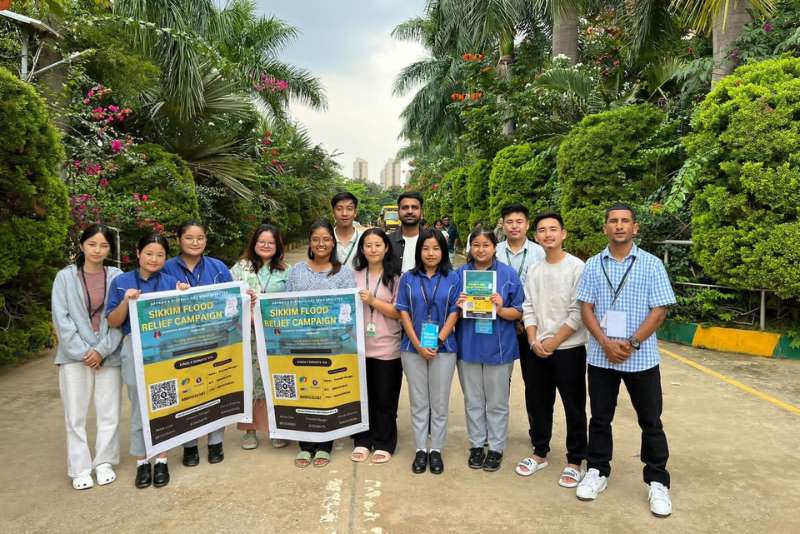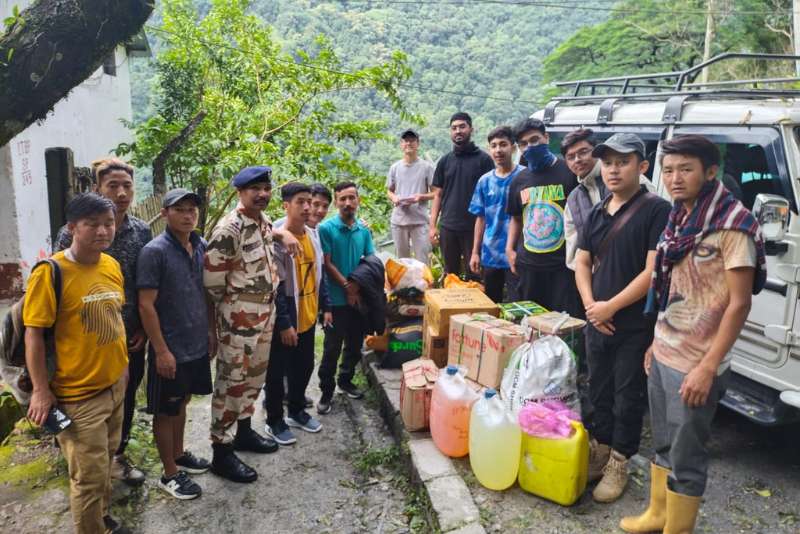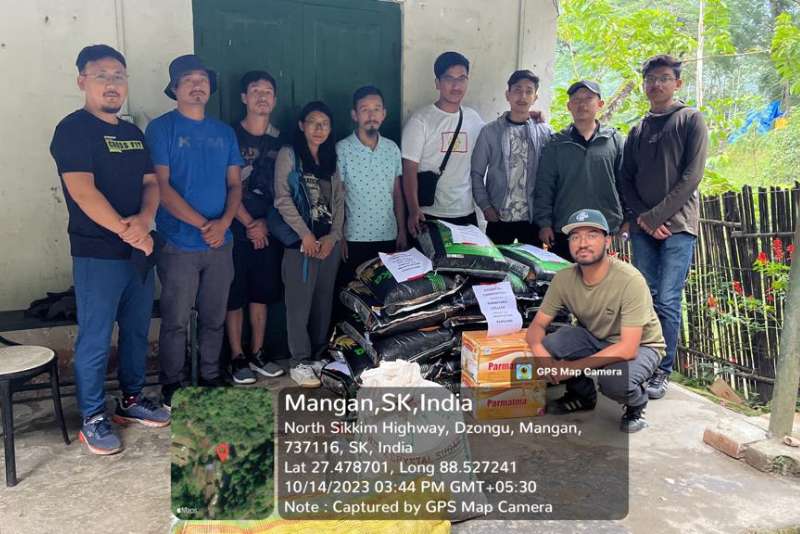
Young Volunteers Restore Homes and Deliver Relief Materials in Northeastern Sikkim State
In the wake of a devastating cloudburst and flash floods that wreaked havoc in the northeastern state of Sikkim, a group of dedicated young volunteers from the Karnataka College Group of Institutions (KCGI) rushed to aid the flood-affected residents. Their selfless efforts not only involved distributing crucial relief materials but also the herculean task of restoring mud-filled houses to their original condition, enabling the affected population to return to their homes from relief camps.
Ms. Nima Lhaki, alongside Abiral Upreti and Pravesh Manger, students from KCGI, spearheaded this benevolent initiative with Bhupendra Chettri along with Desire Sharma, Shiraz Pradhan, Muksam Limboo and Siddharth Tamang. Their mission was to alleviate the suffering of the people in Sikkim who had been upended by the sudden cloudburst over Lhonak Lake.
Restoring Homes, Rebuilding Lives

The group of young volunteers demonstrated unwavering dedication, working tirelessly day and night to help the flood-affected people of Sikkim. Bhupendra Chettri, a youth from Pakyong who was part of this compassionate team, said, “Our volunteers are actively involved in restoring the houses of flood-hit victims who now live in either relief camps or other temporary accommodations. We have also been successful in directly delivering the relief materials to the flood-affected victims’ houses with the support of KCGI.”
The flooding disaster left 2,002 houses in ruins, forcing 1,852 people into 19 relief camps, according to the state government. Nima Lhaki, serving as the coordinator for the volunteering group, noted, “We feel grateful that we could reach more than 250 houses in a span of 4 days and provided ration materials like rice bags, cooking oils, diapers, clothes, etc.”
Tragedy Strikes Sikkim
The catastrophe unfolded on October 4 when a cloudburst triggered the rupture of a dam at Lhonak Lake in Sikkim, leading to flash floods in the low-lying areas of the Teesta River basin. This area, bordering Tibet in China and the Himalayan nation of Nepal, bore the brunt of the calamity. The Chungthang dam, the state’s largest hydropower project, suffered significant damage, exacerbating the devastating effects of the glacial lake outburst.
Unwavering Dedication

The volunteering group, consisting of ten individuals, was a ray of hope in the midst of adversity. Abiral Upreti, while speaking to Gangtokian on October 20, shared, “Our volunteering group provided food, clothes, water, and emergency medicines to the people in relief camps.” However, the true extent of the tragedy remains uncertain. A volunteer from Pakyong, who chose to remain anonymous, emphasized, “The current death toll and the number of missing persons are based on the information local people have given to the government, but nobody knows the exact number.” Concerns persist that the number could be higher, as there is no proper record of migrant workers engaged in construction sites along the Teesta River.
Government’s Response
The state government swiftly responded to the crisis by deploying helicopters to rescue stranded individuals, as the flood washed away 33 bridges and major roads, isolating several villages. “We have completed the evacuation of all stranded tourists,” revealed a government official who preferred to remain anonymous.
Climate Change Warning
The catastrophic flash floods in Sikkim have been attributed to a combination of excess rainfall and a Glacial Lake Outburst Flood (GLOF). This event serves as a stark reminder of the significant changes occurring in the Himalayan glaciers and glacial lakes due to climate change.
The selfless actions of the KCGI students and their unwavering commitment to the people of Sikkim during their time of need are a testament to the indomitable human spirit.
Also Read: Sikkim’s CM Tamang Accuses Opposition Leader Chamling of Corruption
Gangtokian Web Team, 21/10/23


















































